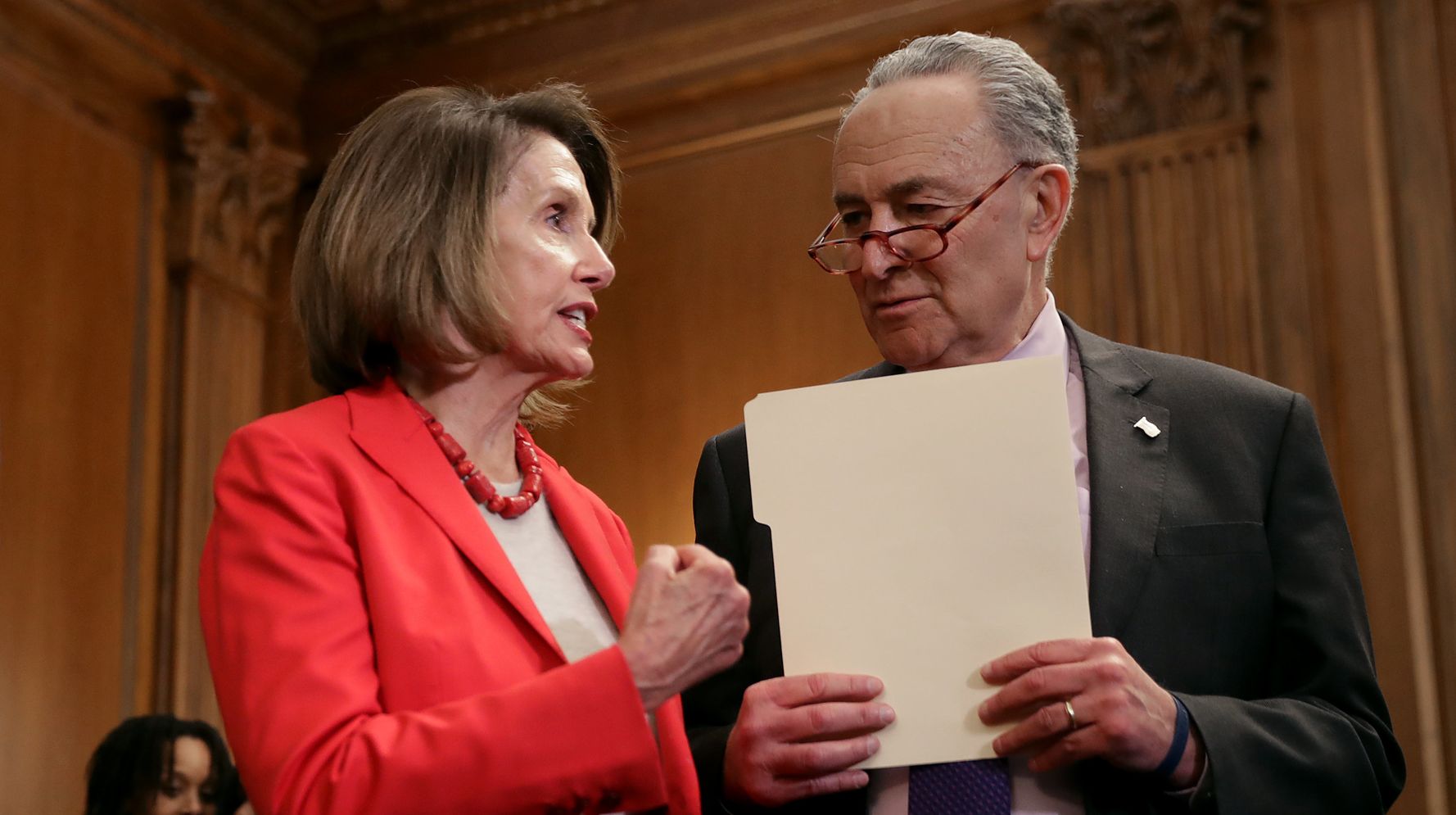[ad_1]
Congressional Democrats, empowered by their new House majority, introduced legislation on Wednesday that would raise the federal minimum wage to $15 an hour. It’s incredibly significant, both in symbolism and in effect. It’s a clear sign of how far the Democratic Party has moved — and how it’s moved toward smart, powerful economic policymaking.
It was just six years ago that President Barack Obama was pushing an increase in the minimum wage from $7.25 an hour, where it has now sat for nearly 10 years, to $9 an hour. Democrats in Congress went slightly further in 2013, introducing a bill to set a $10.10 wage floor. Even three years ago, the party power was advocating an increase to only $12 an hour.
How did Democrats ditch their more timid positions to rally behind a $15 wage? The seeds were sown during the Great Recession, when millions of Americans lost their jobs and therefore their incomes. Many of those newly jobless people ended up in service sectors like retail and fast food, where they soon found that minimum wage work doesn’t pay enough to get by. The economy has slowly recovered since and the unemployment rate now stands at historic lows. But even as more people have gone back to work, their pay has only recently started to increase and wage growth is still behind where it was before the recession hit.
Over all of those years, the federal minimum wage stayed stuck in place, losing 10 percent of its purchasing power to inflation since the last time it was raised. It’s now worth 25 percent less than at its peak purchasing power in 1968. Today a minimum wage job is not even enough to lift a single parent who works full-time above the poverty line (which is itself an arbitrary cutoff that doesn’t capture the full costs of getting by).
The growing dissatisfaction with pay found a unifying outlet in 2012, when a group of fast food employees staged the industry’s first-ever strike in New York City. It was the beginning of what has become the Fight for $15 movement, which has staged a series of ever-larger strikes all across the country to call for a $15 minimum wage and the right to form unions. The movement has expanded beyond fast food to include adjunct professors, airport employees, childcare providers and hospital workers.

What many thought was an outrageous demand when the Fight for $15 began has become reality in a number of places. Three states — California, Massachusetts and New York — have mandated minimum wage increases that will reach $15 an hour, while a handful of cities have done the same. Since the movement started, 22 million low-wage workers have received raises thanks to state and local increases, earning a collective $68 billion more. The majority of those raises came in places that updated their minimums to $15 an hour.
The demand for a $15 wage floor is not arbitrary. At that level, the minimum wage is as valuable today in terms of purchasing power as it was in 1968. According to a 2017 analysis by the Economic Policy Institute, a $15 federal minimum wage would directly raise pay for 22.5 million people, giving them an extra $5,100 in annual income on average. Another 19 million would also likely benefit as employers raised pay for workers making just over $15 an hour.
And research has generally found that minimum wage increases don’t lead to mass layoffs as employers adjust to a new pay floor. One study looking at 138 increases between 1979 and 2016 found that the number of low-wage jobs was left basically unchanged. Other research ― especially the highest-quality studies — has similarly found no net impact on jobs. On the other hand, research does show that increases in the minimum wage are effective at lowering the poverty rate.
The Democrats’ new minimum wage bill doesn’t stop at calling for a $15 wage, either. It also would gradually eliminate the lower minimum wage for tipped workers ― like restaurant servers, hotel cleaners and nail salon technicians ― which has been pegged at just $2.13 an hour since 1991. Making such a low wage and therefore having to rely so heavily on tips has been associated with workers experiencing higher rates of sexual harassment as well as higher poverty rates.
As with an overall increase, evidence suggests that getting rid of the tipped minimum wage wouldn’t be harmful. A 2014 analysis found that employment growth was above average in states that got rid of their lower tipped minimum. Tipped workers also end up better off, despite some worries that losing the reliance on tips will lead to lower incomes. Tipped workers in states with one minimum wage for all employees make almost 17 percent more, including gratuities, than those who work in states with tipped wage minimums.
The Democrats’ bill also ensures that minimum wage workers won’t be left to languish without raises in the future. It includes automatic increases in the minimum wage to match increases in the median wage earned by all Americans starting in 2025. That would effectively remove low-wage employees’ pay as a congressional bargaining chip, instead offering them the reassurance of regular raises.
By some measures, our economy appears to have been booming for years. But too many American workers still don’t enjoy financial security. While corporate profits have soared, 4 in 10 adults don’t have enough saved to deal with an unexpected $400 emergency. They’re desperate for a raise. It’s reassuring that Democrats are heeding their pain and listening to their demands by backing a policy that could actually bring relief to those who need it most.
Bryce Covert is an independent journalist writing about the economy. She is a contributing op-ed writer at The New York Times and a contributing writer at The Nation.
Calling all HuffPost superfans!
Sign up for membership to become a founding member and help shape HuffPost’s next chapter
[ad_2]
Source link





